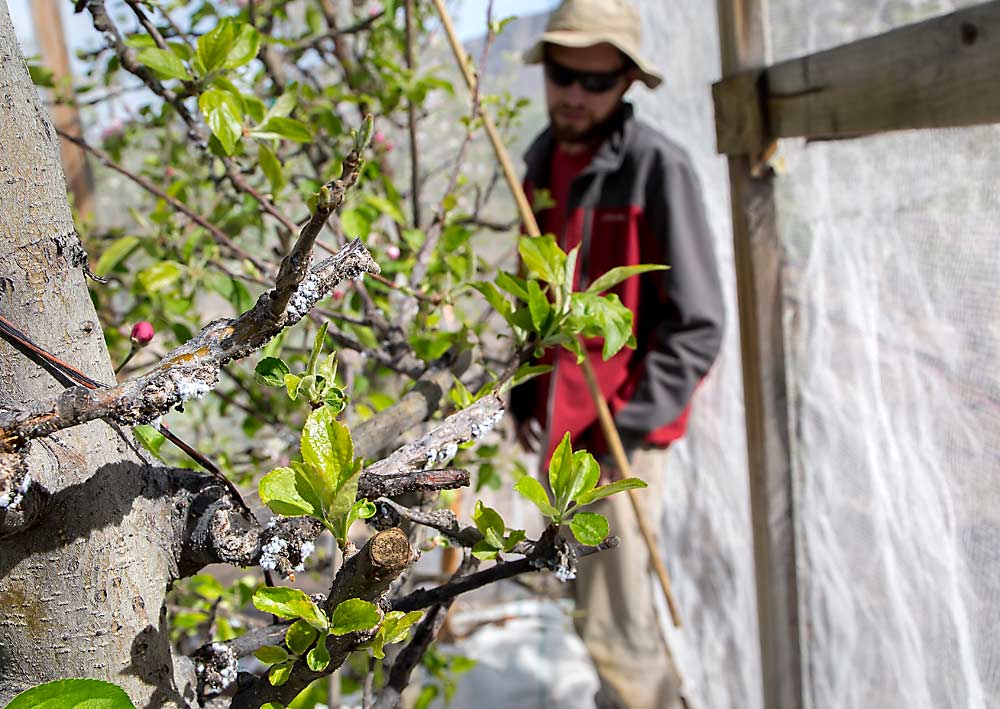
Woolly apple aphids colonize a branch, evidenced by the white fuzz in the foreground, while graduate student Adrian Marshall surveys the pest’s population under netted trees in April 2018 at Washington State University’s Sunrise Research Orchard near Wenatchee. As netting becomes more popular to reduce sunburn, Marshall is studying its effects on entomology, both the good bugs and bad bugs. (Ross Courtney/Good Fruit Grower)
Orchard netting is good at keeping things out.
Sun is the obvious example. Hail, wind, birds, even codling moth? Nets thwart them all. But nets also keep out beneficial insects that growers want to let in.
“We need to make sure we keep some predators in the mix,” said Adrian Marshall, a doctoral candidate in entomology at Washington State University.
Comparing insect populations inside and outside of fully enclosed, netted tree blocks at WSU’s Sunrise Research Orchard south of Wenatchee, Marshall determined that predatory syrphid flies and lacewings do not cross a net boundary to feed on woolly apple aphids, a damaging pest.
Inside the nets, Marshall found almost 100 times the number of woolly apple aphid colonies as outside.
And that’s despite an abundance of parasitoid Aphelinus mali and earwigs being inside the cages. Still, the woolly apple aphid population reached infestation levels, thus proving all predators are necessary, Marshall said. The parasitoids and earwigs can’t carry the load by themselves.
For the Sunrise trials, Marshall built two sizes of scaled-down versions of the suspended netting structures common in Washington’s commercial orchards. One covered three trees, the other 48 trees.
He monitored insect populations — both pests and natural enemies — inside and out. Both received the same conventional codling moth management, while he left some of the outside blocks untreated, as a control.
The full-enclosure netting worked for codling moths; Marshall found fewer inside the nets than outside. But the netting also kept predators at bay.
Marshall does not discourage orchard netting. As summer temperatures soar and water becomes scarce, either because of drought or food safety, nets provide an alternative way to mitigate sunburn, and they solve many other problems.
“Just be aware it can have these secondary effects,” he said.
The three-year project was funded by the Western Sustainable Agriculture Research and Education Program and the Washington Tree Fruit Research Commission for about $279,000, combined. He spent most of 2015 building the cages and monitored in 2016 and 2017.
He continued to monitor woolly apple aphid populations in 2018, to establish some baseline data for
follow-up research for which he will release predators, such as lacewings, inside the cages. He is seeking funding for that now. •
—by Ross Courtney






Leave A Comment